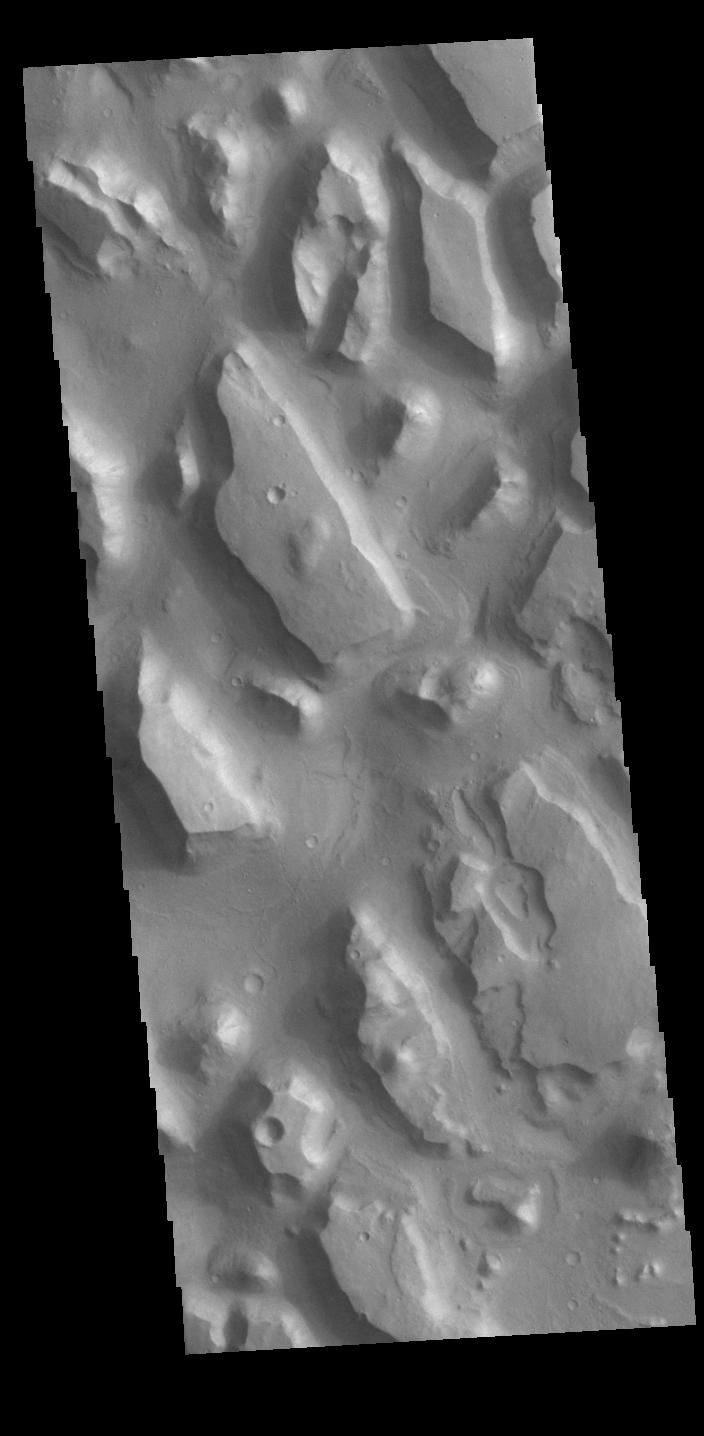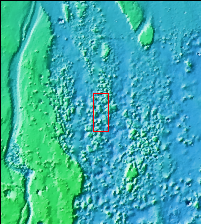
|
Chryse Chaos
- Click the image above for a larger view
- Full-Res JPEG (704 x 1436) (70.4 kB)
- Full-Res TIFF (704 x 1436) (724.0 kB)
Caption:

Context image
This VIS image shows part of Chryse Chaos near the terminal end of the huge outflow channels draining from Valles Marineris into the Chyrse Basin. Chaos terrain is typified by regions of blocky, often steep sided, mesas interspersed with deep valleys. With time and erosion the valleys widen and the mesas become smaller. It has been proposed that a catastrophic outflow of subsurface water creates the chaos and provides the surface flow creating the channel. Chaos terrain is also found along the course of most of channels in this region and may occur where the channel flow fluid warms the subsurface ice creating additional release points for melted subsurface ice. The chaos terrain in this image still retain the classic steep sided large mesas.
Orbit Number: 78179 Latitude: 13.0698 Longitude: 319.552 Instrument: VIS Captured: 2019-07-30 13:47
Background Info:
Please see the THEMIS Data Citation Note for details on crediting THEMIS images.
NASA's Jet Propulsion Laboratory manages the 2001 Mars Odyssey mission for NASA's Science Mission Directorate, Washington, D.C. The Thermal Emission Imaging System (THEMIS) was developed by Arizona State University, Tempe, in collaboration with Raytheon Santa Barbara Remote Sensing. The THEMIS investigation is led by Dr. Philip Christensen at Arizona State University. Lockheed Martin Astronautics, Denver, is the prime contractor for the Odyssey project, and developed and built the orbiter. Mission operations are conducted jointly from Lockheed Martin and from JPL, a division of the California Institute of Technology in Pasadena.
Cataloging Keywords:
| Name | Value | Additional Values |
|---|---|---|
| Target | Mars | |
| System | ||
| Target Type | Planet | |
| Mission | 2001 Mars Odyssey | Mariner |
| Instrument Host | Mars Odyssey | |
| Host Type | Orbiter | Flyby Spacecraft |
| Instrument | Thermal Emission Imaging System (THEMIS) | |
| Detector | ||
| Extra Keywords | Grayscale, Thermal, Water | |
| Acquisition Date | ||
| Release Date | 2019-09-06 | |
| Date in Caption | 2019-07-30 | |
| Image Credit | NASA/JPL-Caltech/ASU | |
| Source | photojournal.jpl.nasa.gov/catalog/PIA23419 | |
| Identifier | PIA23419 | |
